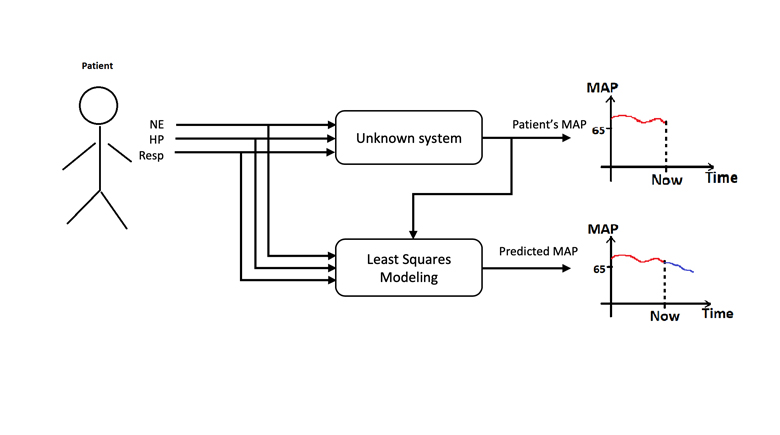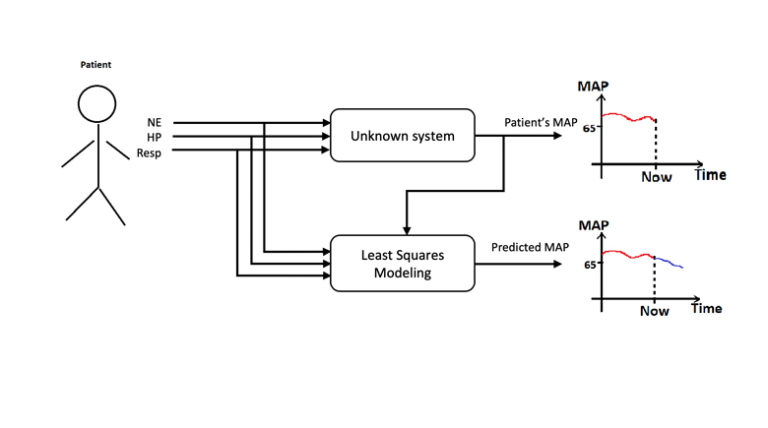
Abstract
Norepinephrine (NE), an endogenous catecholamine, is a mainstay treatment for septic shock, which is a life-threatening manifestation of severe infection. NE counteracts the loss in blood pressure associated with septic shock. However, an NE infusion that is too low fails to counteract the blood pressure drop, and an NE infusion that is too high can cause a hypertensive crisis and heart attack. Ideally, the NE infusion rate should maintain a patient’s mean arterial blood pressure (MAP) above 65 mmHg. There are a few data-driven, quantitative models to predict the MAP, and incorporate NE effects. This paper presents a model, driven by intensive care unit (ICU) measurable data and known NE inputs, to predict the future MAP of an ICU patient. We derive a least square estimation model for MAP based on available ICU data, including heart period, NE infusion rate, and respiration wave. We learn the parameters of our model from initial patient data and then use this information to predict future MAP data. We assess our model with data from 12 septic patients. Our model successfully predicts and tracks MAP when the NE infusion rate changes. Specifically, we predict MAP 3 to 20 min in the future with the mean error of less than 4 to 7 mmHg over 12 patients. Conclusion: this new approach creates the potential to advance methods for predicting NE infusion rate in septic patients. Significance: successfully predicted patients’ MAP could reduce catastrophic human error and lessen clinicians’ workload.

